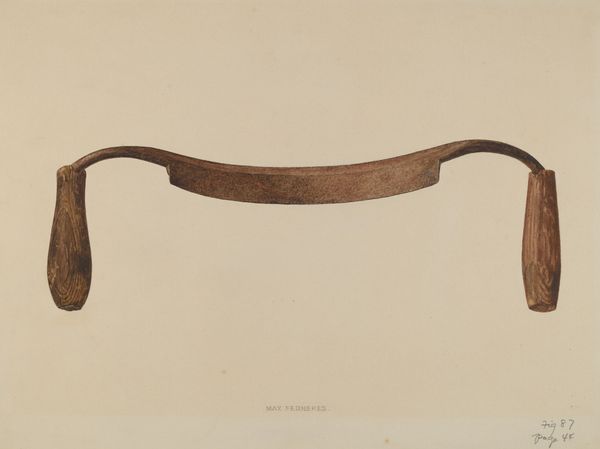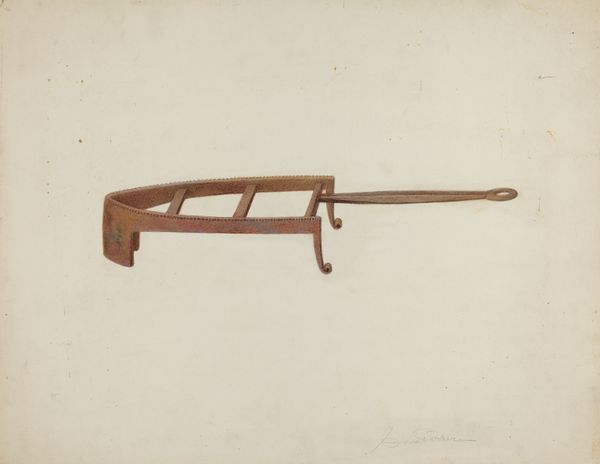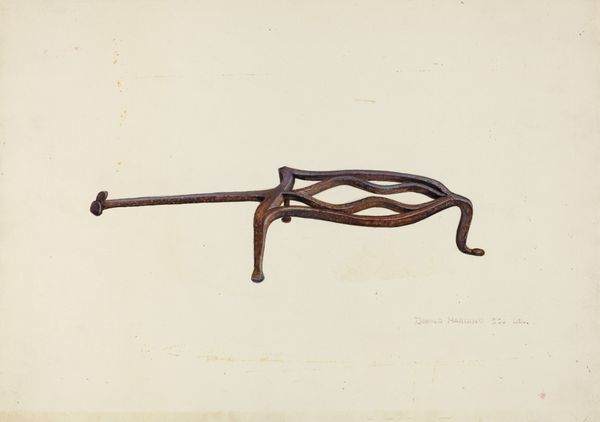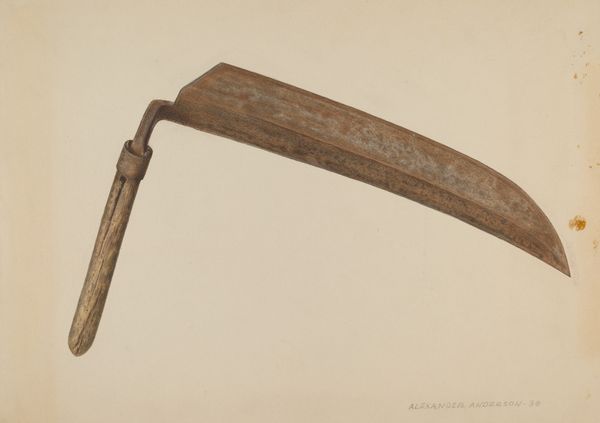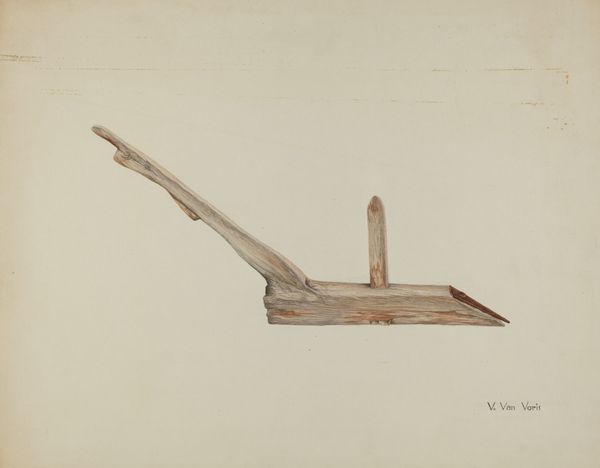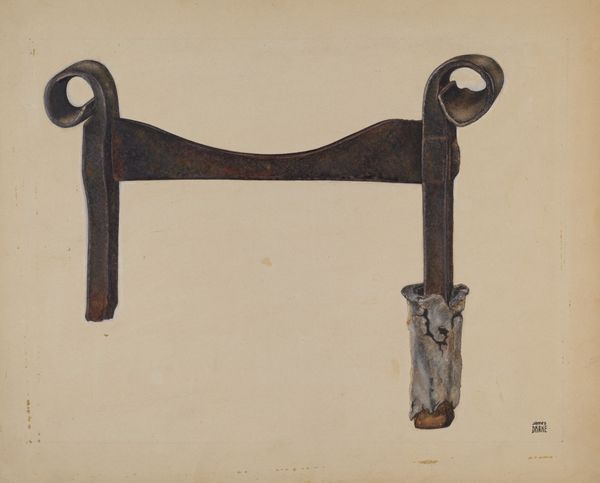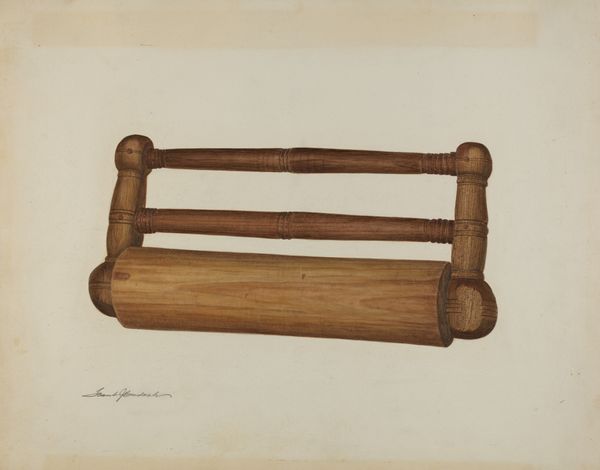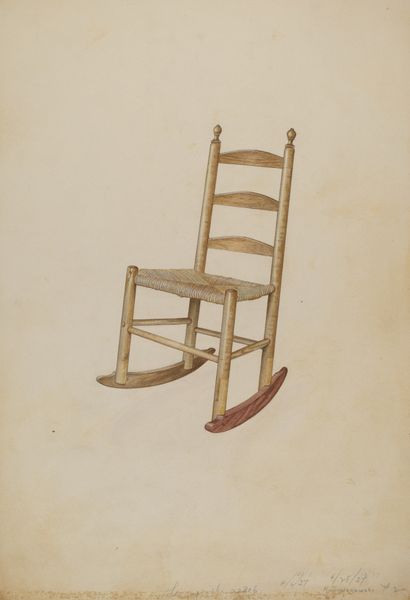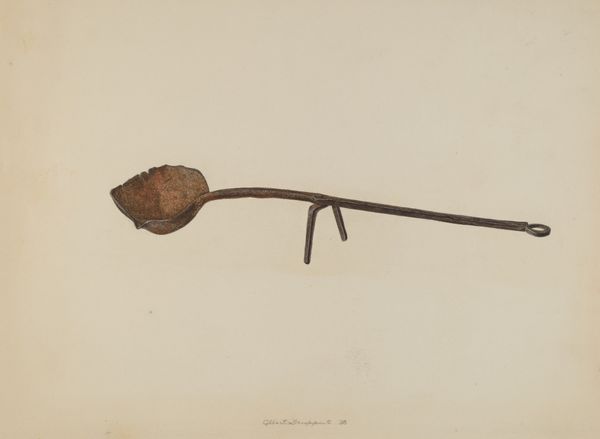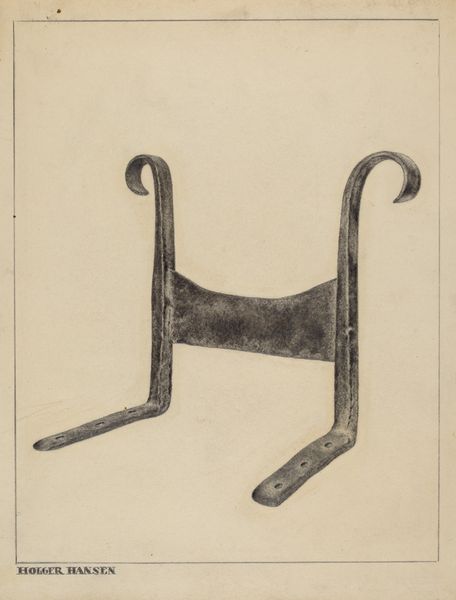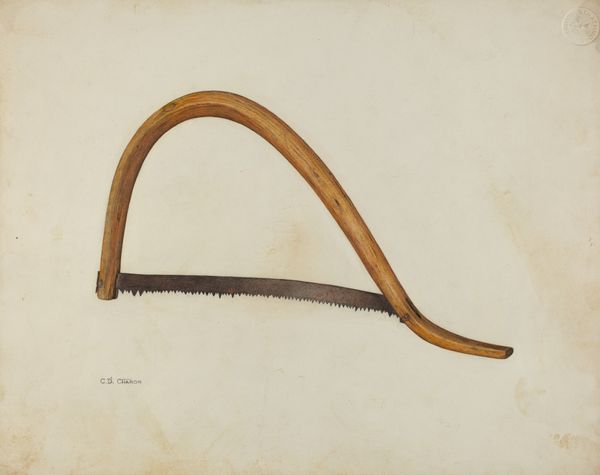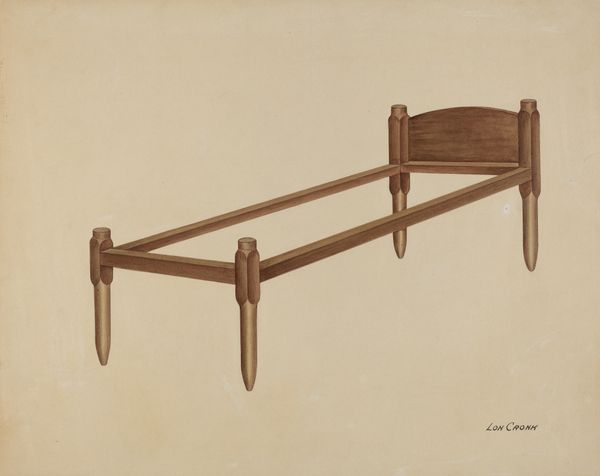
drawing, watercolor
#
drawing
#
watercolor
#
watercolour illustration
Dimensions: overall: 30.6 x 40.9 cm (12 1/16 x 16 1/8 in.)
Copyright: National Gallery of Art: CC0 1.0
Curator: First impression: this object carries a certain austere beauty. Editor: Indeed. What we have here is Henry Waldeck’s "Bucksaw," a 1938 drawing and watercolour rendering of, quite literally, a bucksaw. What intrigues me is Waldeck's choice to immortalize a simple tool. Curator: The tool itself as a symbol suggests more than just mundane labor, right? The bucksaw is not just an instrument for cutting wood; it speaks of self-sufficiency, of making shelter, providing warmth. Its shape echoes primitive forms—an arc, like a ribcage or a hunting bow. Editor: Fascinating! From a materialist perspective, however, consider the wood, the metal. Where were these materials sourced in 1938? Was this saw mass-produced, or handmade? The watercolor medium softens the industrial connotations, highlighting instead the handcrafted nature that was being rapidly displaced. The choice of materials elevates the depiction, questioning what constitutes "worthy" artistic subjects. Curator: Absolutely. And notice the angle; it’s slightly tilted as though resting or just after use. It feels posed yet personal, invoking almost a still-life quality in its precise details. It invites reflection not only upon labour but the dignity of skilled craftsmanship that shapes resources. Editor: And the craftsmanship extends to the art itself! Observe how Waldeck uses watercolour washes to create volume, highlighting the textures of the wood and the sharp edge of the blade. The labour involved in accurately depicting an object created through labour; a cyclical thought. The background is minimal. All of our attention gets directed towards the production means embodied by the saw. Curator: Exactly. The spare backdrop draws my mind back to archetypal tools. There is an honesty and almost solemn quiet about the object, not celebrating progress but almost paying reverence to human ingenuity manifested as a physical tool. Editor: So, from this object lesson on labor and tools of material progress, the dialogue really underscores a changing cultural landscape of the late 1930s. Curator: It also underscores the ability for an artist to distill symbols in an everyday object—drawing deep resonances from form, material and purpose.
Comments
No comments
Be the first to comment and join the conversation on the ultimate creative platform.
